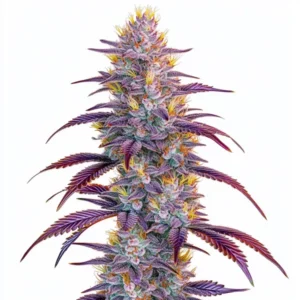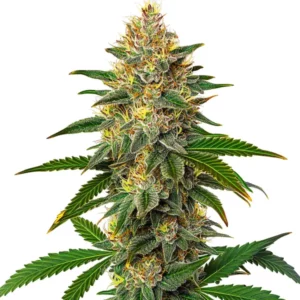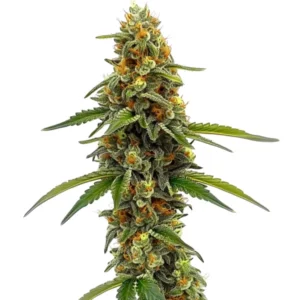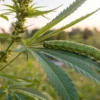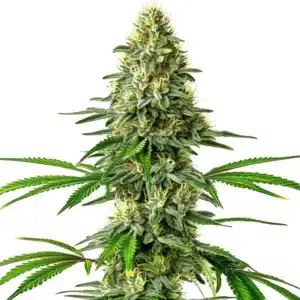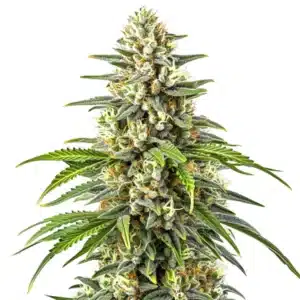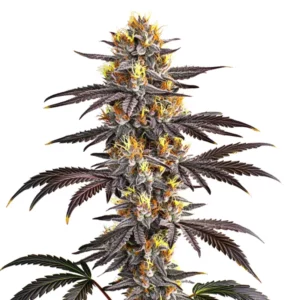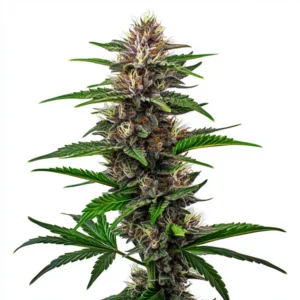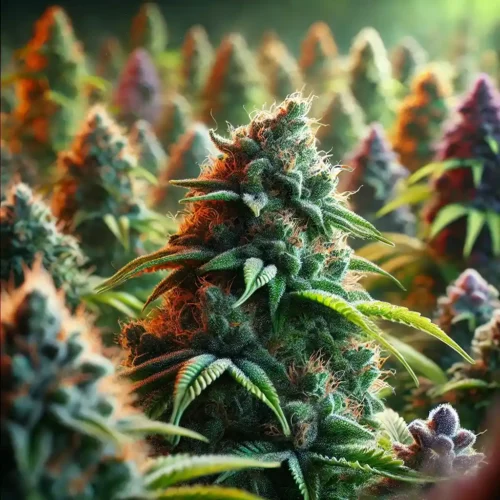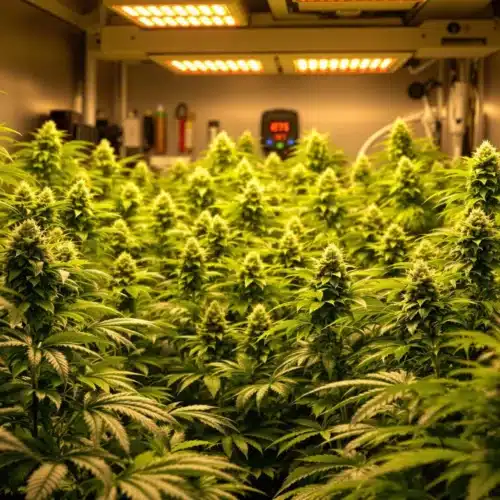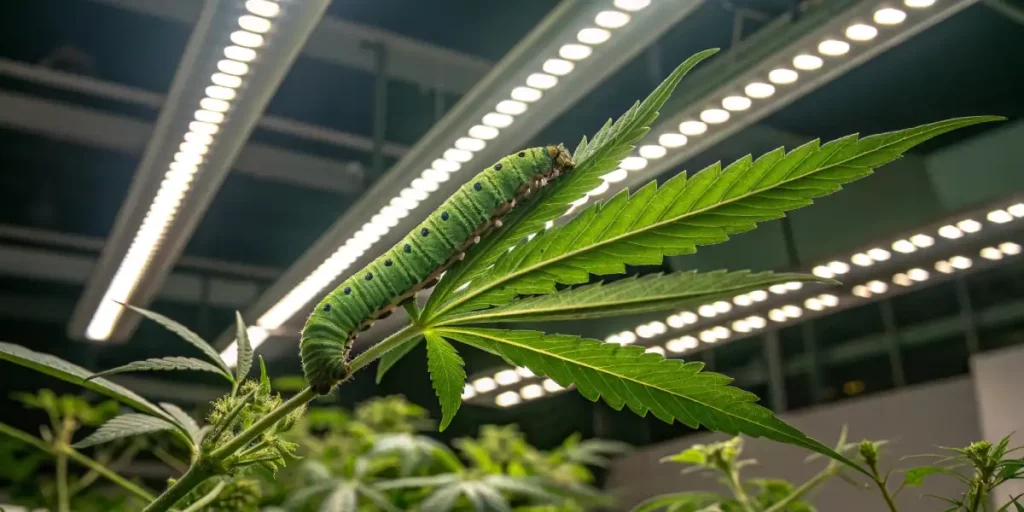
Identify Big Green Caterpillar on Cannabis
If you’re a cannabis cultivator, whether a first-time seed buyer or an experienced grower, you might encounter a big green caterpillar on your cannabis plants. This is a common concern. The big green caterpillar is often the larva of a moth or butterfly and can cause significant damage to your cannabis crops if not identified and dealt with promptly.
Identifying a big green caterpillar on cannabis is crucial for maintaining the health and yield of your plants. Paying close attention to your plants, and regularly inspecting them is a good starting point. Don’t fret though, as this guide will provide you with information on how to identify big green caterpillar on cannabis plants and what to do when you find them.
Before we dive into identification, it’s important to understand that not all caterpillars are harmful. Some are harmless and may even contribute to the ecosystem of your garden. However, some species can be destructive, and these are the ones you need to keep an eye on.
In order to identify big green caterpillar on cannabis, it helps to have a basic knowing of their life cycle and behavior. They hatch from eggs laid by moths or butterflies on the underside of leaves, and then they start feeding on the foliage, growing larger and larger until they are ready to pupate and transform into adults. This knowledge can help you spot the signs of an infestation early.
Identification Guide for Big Green Caterpillar on Marijuana
There are several species of big green caterpillar that you might find on your marijuana plants. These include the tobacco hornworm, the tomato hornworm, and the cabbage looper. Each of these caterpillars can be identified by their unique features.
The tobacco hornworm is a large, bright green caterpillar with diagonal white stripes and a distinctive red horn at its rear end. The tomato hornworm is similar in appearance, but its horn is black instead of red. Both of these caterpillars are known to eat marijuana leaves and buds, and they can completely defoliate a plant if left unchecked.
Learning how to identify big green caterpillar on cannabis plants can save you a lot of trouble. The identification guide for big green caterpillar on marijuana also includes the cabbage looper, a less common but still destructive pest. The cabbage looper is smaller than the hornworms and has a distinctive looping movement, hence its name. It can also cause significant damage to your plants, so it’s important to be able to identify all these caterpillar species.
Remember that while these caterpillars can cause serious damage, they are also part of nature and play a role in the ecosystem. Learning to identify big green caterpillar on cannabis plants can help you manage them responsibly, minimizing harm to both your plants and the environment.
Tobacco Hornworm
The tobacco hornworm is a common pest in cannabis gardens. They are easy to identify due to their bright green color, seven diagonal white stripes, and a red horn at the end of their body. If you notice sudden defoliation or see large, irregular holes in your cannabis leaves, you may have a tobacco hornworm infestation.
It’s important to remove these pests as soon as you spot them. They can rapidly destroy your crop, affecting strains like Orange Kush, or Wombat from BlimBurn Seeds. These strains are known for their robust growth and high yields, but even they can’t stand up to a determined tobacco hornworm.
Correctly identifying the tobacco hornworm on your cannabis plant is the first step towards effective management. If you are unsure what is the big green caterpillar on my cannabis, consult a professional or use online resources to confirm the species. Remember, different caterpillars may require different control methods, so accurate identification is crucial.
Manual removal, as mentioned earlier, is often the most effective way to deal with a tobacco hornworm infestation. However, if you have a larger infestation or if manual removal is not feasible, you may need to consider other options. Always remember to handle these creatures with care, as they are part of the ecosystem and deserve respect.
Promos & Deals
Methods to Identify Big Green Caterpillar on Cannabis
Recognizing and knowing how to identify big green caterpillar on cannabis involves careful observation and inspection. The caterpillars can be quite large, up to four inches long, and they blend in well with the green foliage of your plants. However, they leave telltale signs of their presence, such as holes in the leaves, droppings, and damaged buds.
Another method to recognize these pests is by their feeding habits. They typically feed at night and hide during the day. So, if you notice damage to your plants but can’t see any pests during the day, try checking your plants at night with a flashlight.
Learning the methods to recognize large green caterpillar on cannabis is an essential skill for every cannabis grower. Caterpillars can cause significant damage in a short time, so the sooner you recognize their presence, the better. Regular inspection, combined with a keen eye for the telltale signs of caterpillar damage, is the key to early detection and effective control.
It’s also important to familiarize yourself with the feeding habits and preferred hiding spots of these caterpillars. Comprehending their behavior can help you spot them even when they are trying to hide. So, if you are wondering “what is the big green caterpillar on my cannabis?”, consider their behavior along with their physical characteristics to make a positive identification.
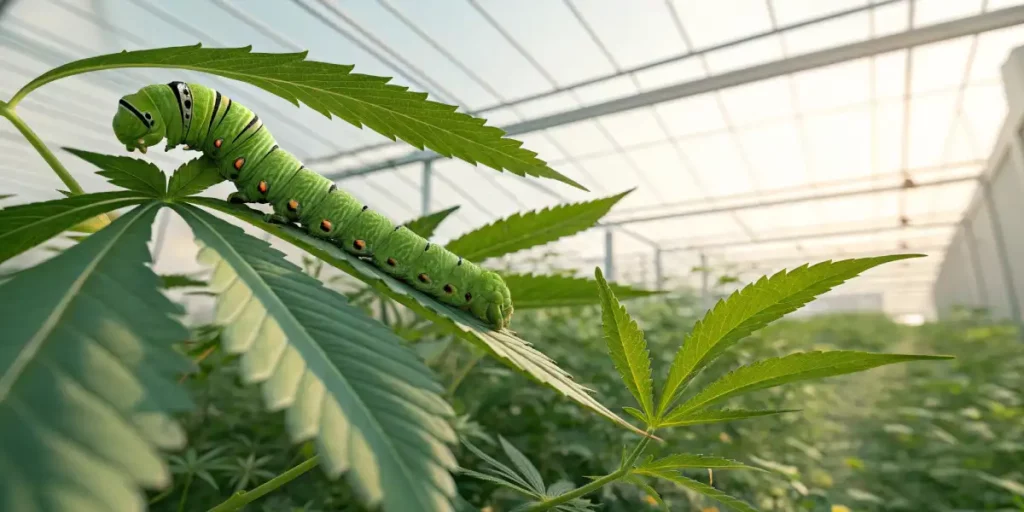
Damage Signs
One of the easiest ways to identify a big green caterpillar on your cannabis plant is by looking for signs of damage. These pests can eat large amounts of foliage and buds in a short time, leaving behind noticeable signs of their presence. Look for holes in the leaves, chewed buds, and droppings on the leaves or ground.
If you notice these signs, inspect your plants immediately. Don’t forget to check the undersides of the leaves, as caterpillars often hide there during the day. The sooner you identify and remove these pests, the less damage they can cause to your precious crops.
Training your eye to spot the damage signs of a big green caterpillar on cannabis is crucial. These signs are often the first clue that you have an infestation. By recognizing the signs early, you can act quickly to remove the caterpillars and minimize the damage to your plants.
Recognizing the damage signs can also help you determine the size of the infestation. For example, a few holes in the leaves might indicate a small number of caterpillars, while severe defoliation could mean a large infestation. This information can help you decide on the best course of action to protect your plants.
How to Identify Big Green Caterpillar on Cannabis: What You Need to Know
If you’re asking yourself, ‘What is the big green caterpillar on my cannabis?’ then you’re already on the right track. The first step in dealing with any pest is proper identification. As discussed, the big green caterpillar on your cannabis is likely the larva of a moth or butterfly, like the tobacco hornworm or tomato hornworm. Learning how to identify big green caterpillar on cannabis is crucial for effective pest management.
These pests can be a major concern for growers, as they can cause significant damage to the plants in a short time. If you identify these pests early, you can take steps to remove them and prevent further damage to your plants.
Remember, the process of identifying big green caterpillar on my cannabis plant is not just about spotting the caterpillar itself. It’s also about recognising the signs of its presence, comprehending its behavior, and knowing how to respond effectively. Being prepared for this common pest can save you a lot of stress and potentially save your crop.
It’s also worth noting that these caterpillars are not only a pest but also an intriguing part of nature. Comprehending their life cycle, behavior, and role in the ecosystem can bring a new perspective to the experience of growing cannabis. In any case, proper identification is the first step towards a responsible and effective response.
Prevention and Control
Preventing a big green caterpillar infestation starts with good gardening practices. Keep your growing area clean, and remove any plant debris promptly. Regularly inspect your plants for signs of pests or disease. Using a good quality, pest-resistant strain from BlimBurn Seeds can also help. Their Santa Muerte strain, for example, is known for its resilience.
If you do find big green caterpillars on your cannabis plants, there are several methods you can use to control them. Manual removal is often the simplest and most effective method. If the infestation is large, you might consider using a natural pesticide or a biological control agent like parasitic wasps, which are natural predators of these caterpillars.
While prevention is always better than cure, it’s also important to have a plan in case you do find big green caterpillars on your cannabis plants. This might include a schedule for regular inspections, a procedure for manual removal, and a list of natural pesticides and biological control agents you can use if needed. Knowing how to identify big green caterpillar on cannabis is essential for quick action. The more prepared you are, the quicker you can respond to an infestation and the less impact it will have on your crop.
Finally, remember that no pest control method is 100% effective, and some level of pest presence is part of the natural balance of any garden. Your goal should not be to completely eliminate all pests, but to manage them in a way that minimises their impact on your plants while respecting the balance of nature.
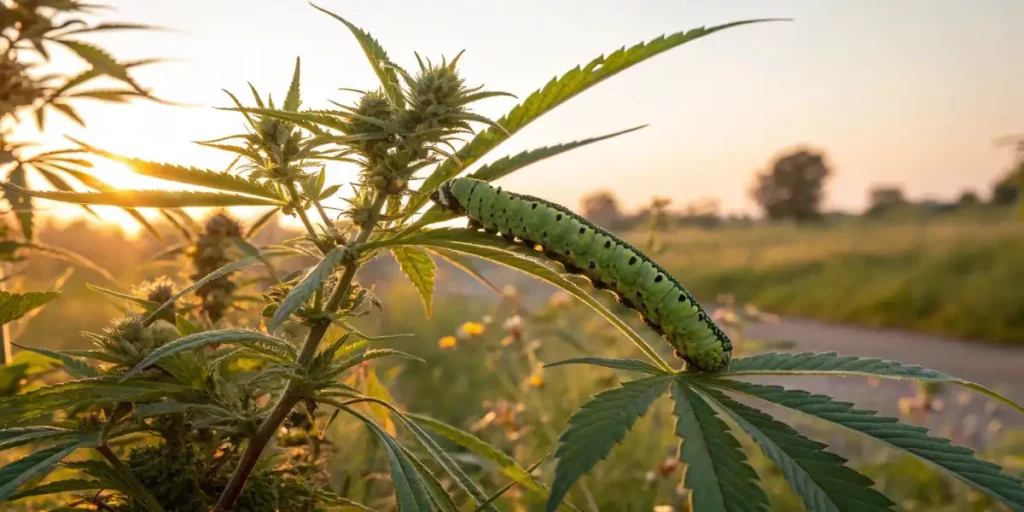
FAQ Section
How Common Are Big Green Caterpillars on Cannabis Plants and How to Identify Big Green Caterpillar on Cannabis?
Big green caterpillars are fairly common pests in cannabis gardens, especially outdoor ones. They are attracted to the green foliage and buds, and they can cause significant damage in a short time if not dealt with promptly.
However, with regular inspection and good gardening practices, you can prevent an infestation and protect your plants. If you do find these pests on your plants, removing them manually is often the most effective method of control.
Big green caterpillars can be found in cannabis gardens in many parts of the world. They are especially common in areas where moths and butterflies are abundant. Familiarity with the local insect population in your area can help you prepare for potential pests and plan your pest management strategies accordingly.
Remember that while big green caterpillars can be a nuisance, they are also part of the natural ecosystem. Learning to live with them and manage them effectively is part of the challenge and reward of growing cannabis.
Are there any natural predators of big green caterpillars?
Yes, there are several natural predators of big green caterpillars. These include birds, spiders, and parasitic wasps. Encouraging these predators in your garden can help control caterpillar populations.
However, it’s important to remember that these predators can only do so much. If you have a large infestation, you may need to take additional measures, such as manual removal or the use of natural pesticides.
Natural predators can be a great help in controlling caterpillar populations, but they should not be relied upon as the sole method of control. A balanced approach that includes prevention, regular inspection, manual removal, and the use of natural predators and pesticides as needed is usually the most effective strategy.
Also, remember that while encouraging natural predators can help control caterpillars, it can also have other impacts on your garden’s ecosystem. Always consider the broader implications of your pest management strategies and aim for a balanced and sustainable approach.
What other pests should I watch out for on my cannabis plants?
Besides big green caterpillars, there are several other pests that can infest cannabis plants. These include aphids, spider mites, whiteflies, and thrips. Each of these pests can cause different types of damage and requires a different approach for control.
Regular inspection of your plants and good gardening practices can help prevent most pest infestations. If you do find pests on your plants, early identification and intervention are key to preventing serious damage.
Each of these pests presents its own challenges, but with knowledge and preparation, you can effectively manage them. The key is to learn about each pest, understand its life cycle and behavior, and develop an effective management strategy. Remember, prevention is always better than cure, so keep your garden clean and regularly inspect your plants for signs of pests.
Finally, remember that pests are also part of the natural ecosystem, and a certain level of pest presence is to be expected. The goal is not to completely eliminate all pests, but to manage them in a way that minimises their impact on your plants and respects the balance of nature.
Can big green caterpillars infest indoor cannabis plants?
While big green caterpillars are more common in outdoor gardens, they can also infest indoor plants. The caterpillars can be brought in on clothing or other plants, or they can make their way in through open windows or doors.
As with outdoor plants, regular inspection and good gardening practices are crucial for preventing an infestation. If you do find these pests on your indoor plants, removing them manually is often the most effective method of control.
Indoor cannabis gardens are not immune to big green caterpillars, but with careful management, you can minimize the risk. This includes regular inspections, promptly removing any caterpillars you find, and monitoring your plants for signs of damage. With these practices, you can keep your indoor garden healthy and productive.
Remember, even in an indoor garden, the principles of sustainable and respectful pest management apply. It’s always better to prevent an infestation than to have to deal with one, so keep your garden clean, monitor your plants regularly, and always be prepared to act quickly if you find any pests.
What Should I Do If I Find and Identify Big Green Caterpillar on Cannabis?
If you find a big green caterpillar on your cannabis plant, the first step is to remove it. Put on a pair of gloves and gently pick the caterpillar off the plant. Be sure to check the rest of the plant and any nearby plants for additional caterpillars.
After removing the caterpillar, monitor your plants closely for signs of further infestation. If you find more caterpillars or signs of damage, you may need to take additional measures, such as using a natural pesticide or introducing natural predators.
The key to dealing with big green caterpillars on your cannabis plant is to act quickly. The faster you remove the caterpillar and take steps to prevent further infestation, the less damage your plants will suffer. And remember, the best defense against these pests is a good offense: keep your garden clean, inspect your plants regularly, and be prepared to act at the first sign of trouble.
Finally, remember that while these caterpillars can be a nuisance, they are also part of the natural ecosystem. Try to handle them gently when removing them, and consider using non-lethal control methods when possible. The goal is not to eliminate these creatures, but to manage them in a way that protects your plants and respects the balance of nature.

